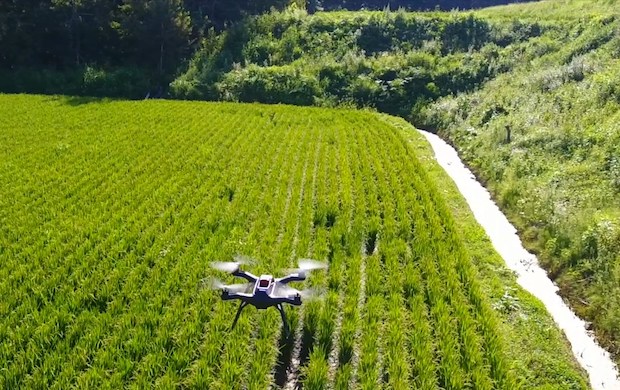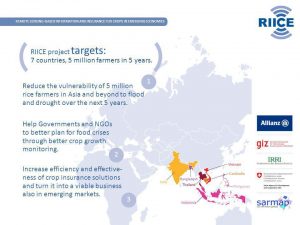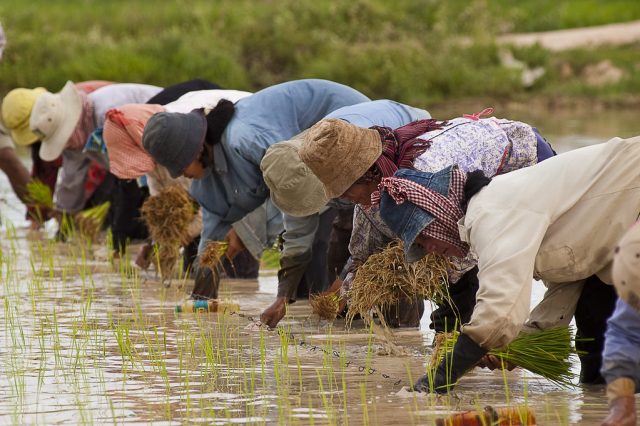Rice is everywhere in Asia. It is also a key export for many countries here. Seven of the world’s top 11 rice exporters are in Asia. India was top of the list with USD7.4 billion in rice exports with Thailand and Vietnam in second and third spot sending USD5.5 billion and USD2.2 billion abroad respectively.
That’s a lot of grain and a lot of money. Despite this, rice farming is an industry that has gone relatively unchanged by recent technological advancements. Some Asian countries have five or more apps to help you catch a ride, but developers have spent next to no time in finding ways to help the continent’s rice farmers.
Part of that is logistical. Many rice farmers in Asia don’t have smartphones. And part of the reason is geographical. Those in charge of building and creating apps have spent their lives in the city. Not only do they have no idea what farmers need, but they wouldn’t even know how to implement it even if they understood these challenges.
However, this has started to change. In countries throughout Asia, tech and rice farming are proving to be a good complement. Almost as good as rice and curry.
Cambodia uses blockchain to find new deals
Cambodian organic cooperative Reaksmey Lekkompos Kaksekor and Oxfam have teamed up to create an app that allows rice farmers to sign smart contracts, track deals and even negotiate prices thanks in part to blockchain technology. The project is known as BlocRice and has a phone app that farmers can use to access all of these tools.
The hope is blockchain technology initiatives can assist Cambodian rice growers by connecting them a greater number of buyers who pay fairly and are open to negotiating prices. Many farmers currently struggle to find more than one buyer and have no alternatives apart from accepting what they offer.
Another app hopes to collect enough data to help Cambodian farmers make future decisions. The MobilES app allows local farmers to enter data about rainfall, food production, water quality and energy use. This information will then go to government planners, who will use it to develop better policies to deal with climate threats such as forest loss.
These surveys are currently done in person. The process is expensive and means data collection is infrequent. Cambodia has one of the world’s highest deforestation rates and researchers hope more data allows them to understand the true impact of this on farmers.
Japan turns to drones

Even though Japanese rice only accounted for USD46.5 million in exports last year, without it sushi would be a whole lot different. Japan’s aging population has impacted the agriculture industry with elderly farmers needing alternatives to the labor intensive work of growing and harvesting rice
New drone technology can apply pesticides and fertilizer to a rice field in about 15 minutes. Doing this manually would take upwards of an hour and require farmers to carry heavy tanks to make it happen. With farms facing labor shortages throughout Japan, this is a welcome advancement.
“People still have a strong stereotypical image of farming as a dirty and hard-labor job, but it’s no longer all true thanks to gradual mechanization,” Shota Chiba, a Japanese farmer, told Reuters. “New technology like diagnostic drones could help change this old image and attract more young people to farming, which I truly enjoy.”
Satellites keep an eye out for SE Asia rice harvests

Rice farming is no longer a ground bound endeavor. Deutsche Gesellschaft für Internationale Zusammenarbeit (GIZ) GmbH, SwissRe, International Rice Research Institute (IRRI), sarmap SA and the Swiss Agency for Development and Cooperation (SDC) launched Remote Sensing-based Information and Insurance for Crops in Emerging Countries (RIICE) in 2012.
This rice crop monitoring initiative uses SAR satellites to collect detailed information of land used for rice cultivation in Cambodia, India, Indonesia, Thailand and Vietnam.
The information gleaned from the satellites tells monitors where and how much rice is being grown, how the seed is developing and whether the fields have too much or too little water. The information is also fed into simulation models that predict the anticipated harvest yield with approximately 90 percent accuracy.
RIICE also enables farmers to take steps early on to counter imminent harvest losses as well as help resume operations in the aftermath of floods, typhoons and drought.


































